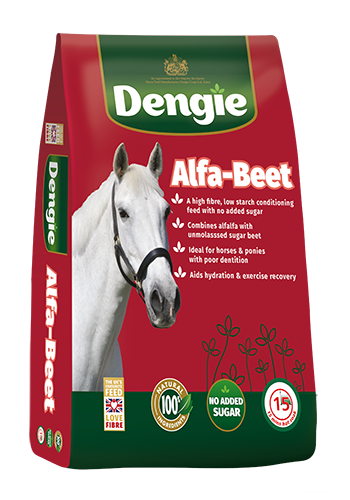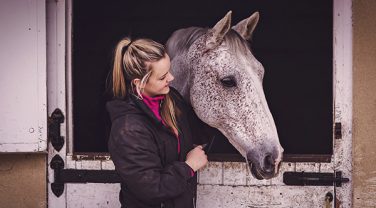Feeding your horse during cold weather
With temperatures forecast to be below zero and snow fall for areas of the country, ensuring your horse or pony is kept warm and going about your normal routine can be a challenge. In our latest blog the Dengie nutrition team have come up with their top tips to help your horse and pony brave the cold weather.
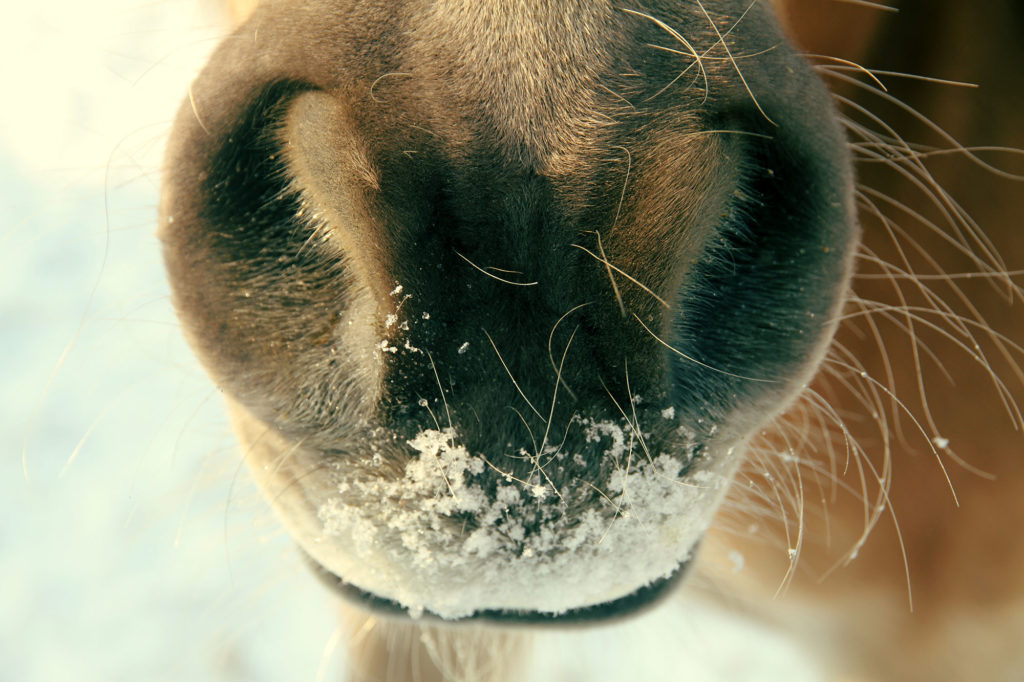
How much forage should I feed my horse?
If your horse is not overweight, then ad lib forage can be offered as it keeps the time the gut is empty as short as possible which reduces the risk of problems such as ulcers and colic. For good doers the amount of forage may need to be restricted to about 1.5% bodyweight to ensure they don’t put on too much weight. The lower the calorie/energy content of the forage, the more can be fed without resulting in weight gain. In situations where only high nutritional value forage such as haylage is available, using a low calorie chopped fibre feed can be a convenient way to reduce calorie intake. Just replacing 1 or 2kgs of haylage a day can help to keep weight gain under control.
Don’t forget that fibre feeds are generally much lighter than cereal-based feeds, so the volume always seems like a lot – 1 scoop of chopped fibre weighs 300-400gms compared to over 1kg of mix. The extra volume is really beneficial for providing more chew time for stabled horses.
What is an alternative to soaking hay?
In winter, soaking hay can be a real challenge as taps and water-filled buckets freeze. Steaming is one alternative and a commercial steamer uses much less water than soaking hay. Using a commercial steamer also produces a much cleaner hay which is very important for those with respiratory issues. Unfortunately investing in a commercial steamer isn’t always viable and so alternatively Dengie have a wide range of chopped fibre feeds that can be used as complete or partial hay replacers! For those soaking hay to reduce sugar intake, steaming isn’t as effective due to the smaller volume of water used and alternatively the use of a low sugar partial or total hay replacer from the Dengie range can help to manage overall sugar intake. Click here to read more about the Dengie hay replacers.
How to keep your horse warm – feed lots of fibre!
Feeding fibre is the best way to keep horses warm in the winter months as heat is produced when fibre is fermented in the horse’s digestive system. However, if your horse is carrying a little too much weight ensure you choose a low-calorie fibre feed such as Dengie Hi-Fi Lite. Did you know that Hi-Fi Lite has half the sugar level of hay!
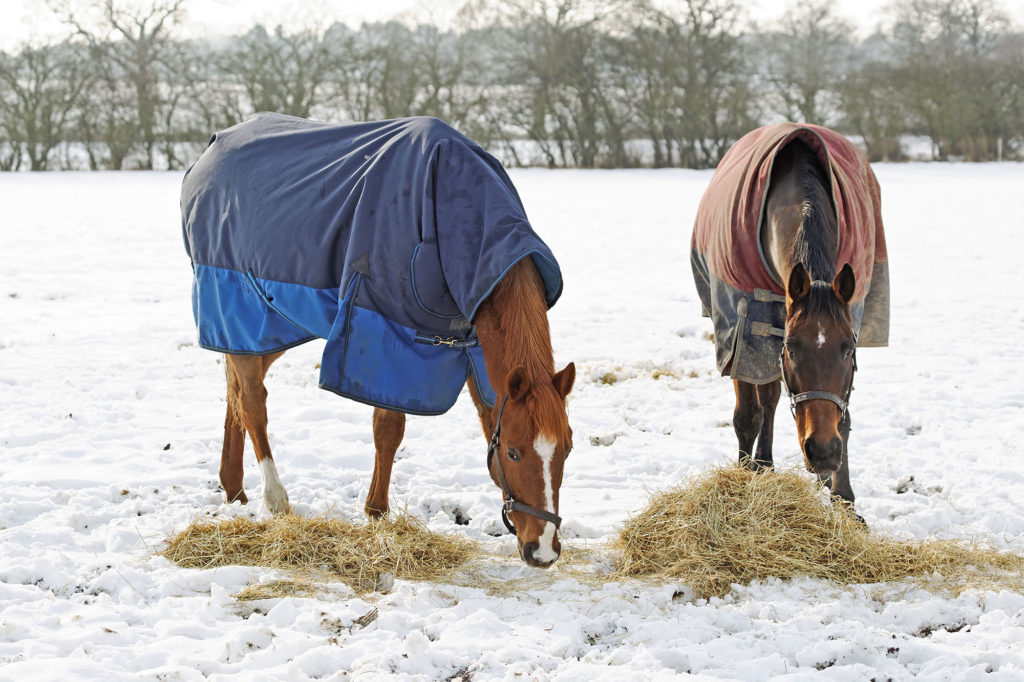
Is your horse drinking enough?
When it’s really cold, some horses can be put off drinking, which increases the risk of dehydration and colic. Regularly check your horse’s water to break and remove ice. Floating a tennis ball in the trough or buckets can help mean your horse can always access water as the bucket won’t be totally iced over.
Research has shown that horses tend to drink 6-14% less in colder weather. Providing a soaked fibre feed, such as Dengie Alfa-Beet is a great way to provide an additional source of moisture to aid hydration in the winter, plus with a 15-minute hot soak your horse or pony can benefit from their own warm breakfast and dinners!
How to keep your horse entertained when stabled
Research has shown that offering a variety of forages and fibrous material to horses not only provides a more stimulating environment, but it allows them to demonstrate more natural foraging behaviour. Try offering a selection of fibres such as Dengie Hi-Fi Senior or Meadow Grass with Herbs alongside your horse’s usual forage of hay and/or haylage.
There are lots of tricks for making hay and haylage last longer, such as placing it in small-holed nets or placing several haynets inside one another. When feeding a chopped fibre offer it in several rubber trug buckets to encourage foraging activity.
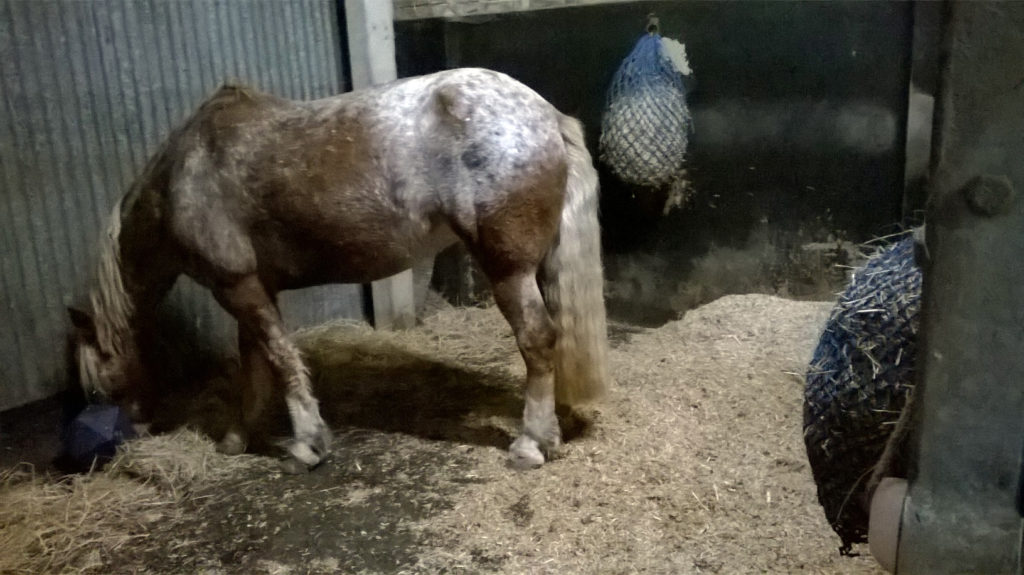
How to make dietary changes
Diet change is one of the biggest risk factors associated with colic. When making any dietary changes, including grazing and forage it should be done gradually ideally over the period of at least a couple of weeks. In situations of adverse weather conditions this may not always be possible and so if your horse normally lives out and you know bad weather is on the way try to supplement the grazing with the forage you would feed if your horse then has to be stabled suddenly and then at least they will have been used to having some in their diet. At times of diet change or stress also consider the use of a digestive supplement.
Winter Feeding Top Tips
- Use fibre and oil as energy sources to help avoid over-excitable behaviour
- Fibre is the horse’s central heating system – keep your horse warm by feeding lots of it
- Use small-holed haynets to help keep your horse occupied and make his forage ration last longer
- Use the winter months to help promote weight loss, if needed. Try not to over-rug or over-feed, and keep exercising him as much as the winter weather will allow
- Feed a high-fibre diet to help promote digestive health, maintain regular bowel movements and help reduce the risk of colic


